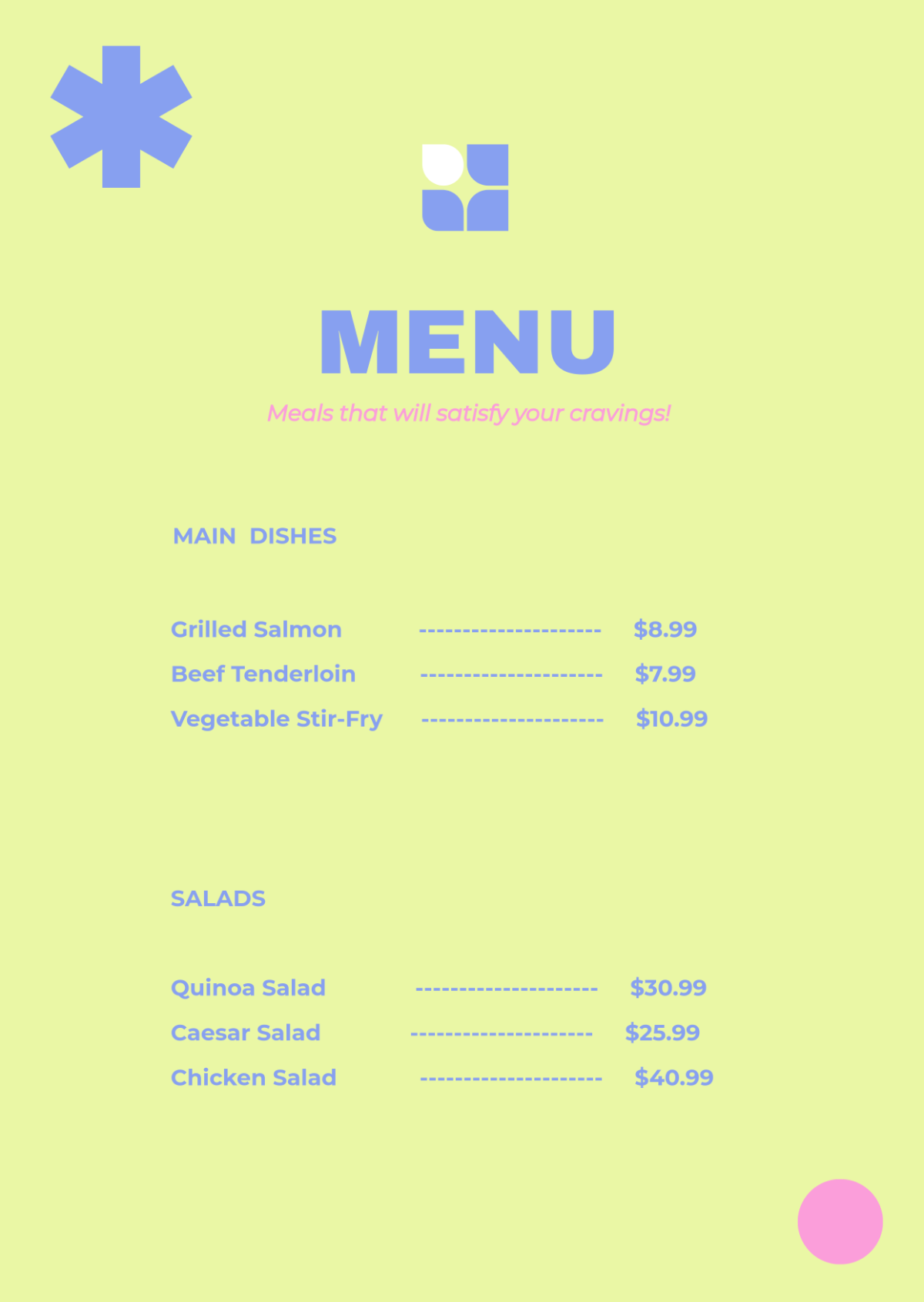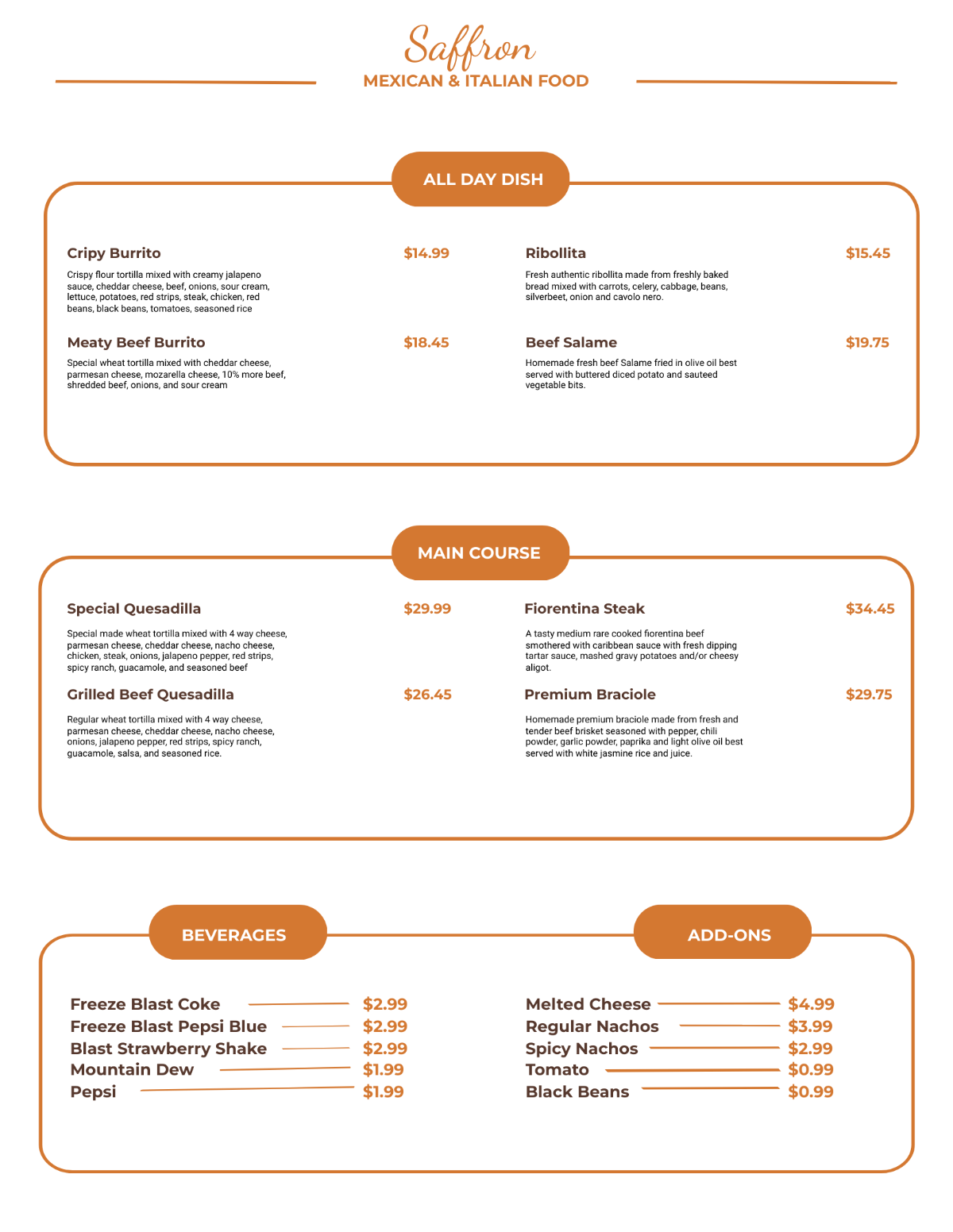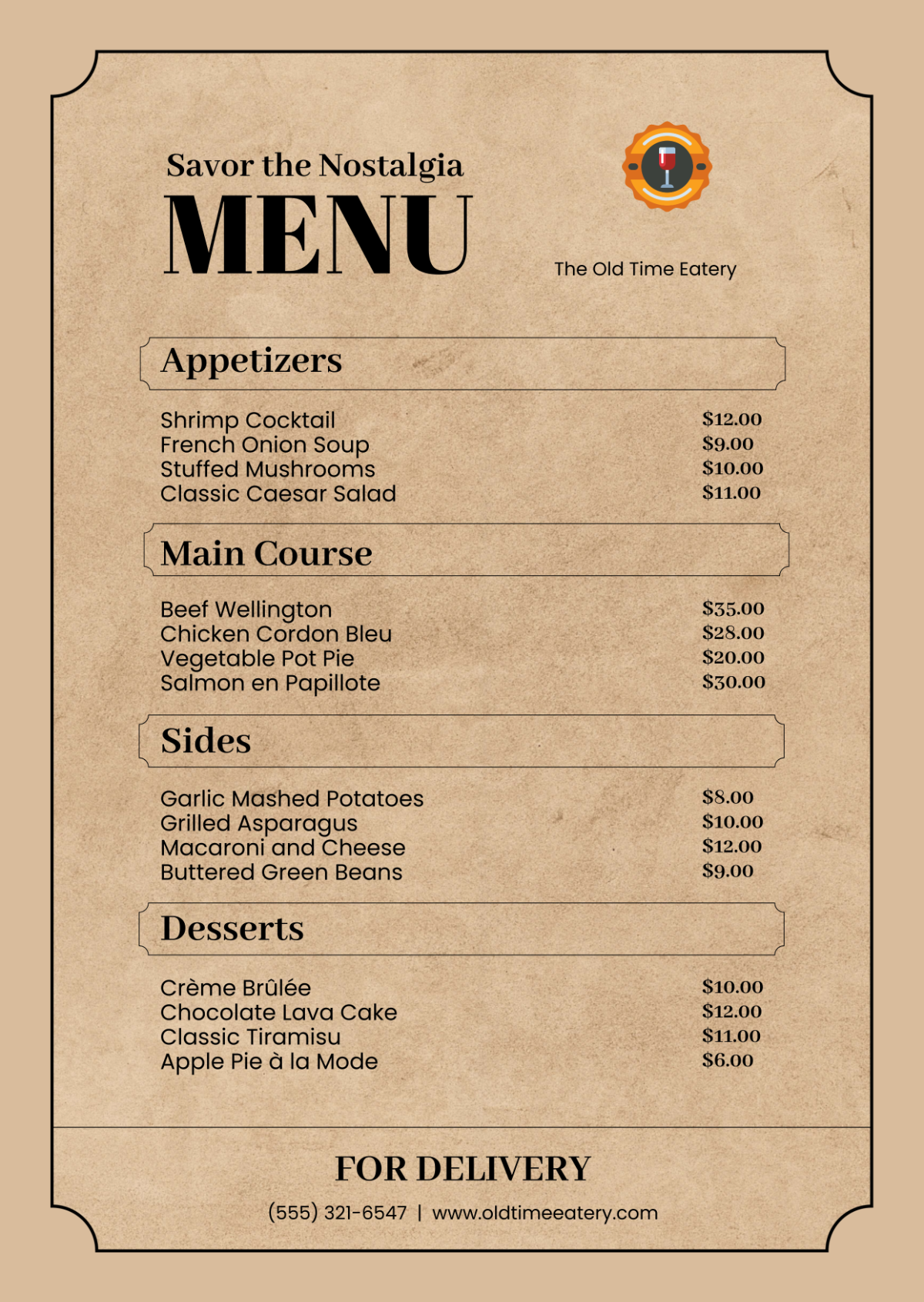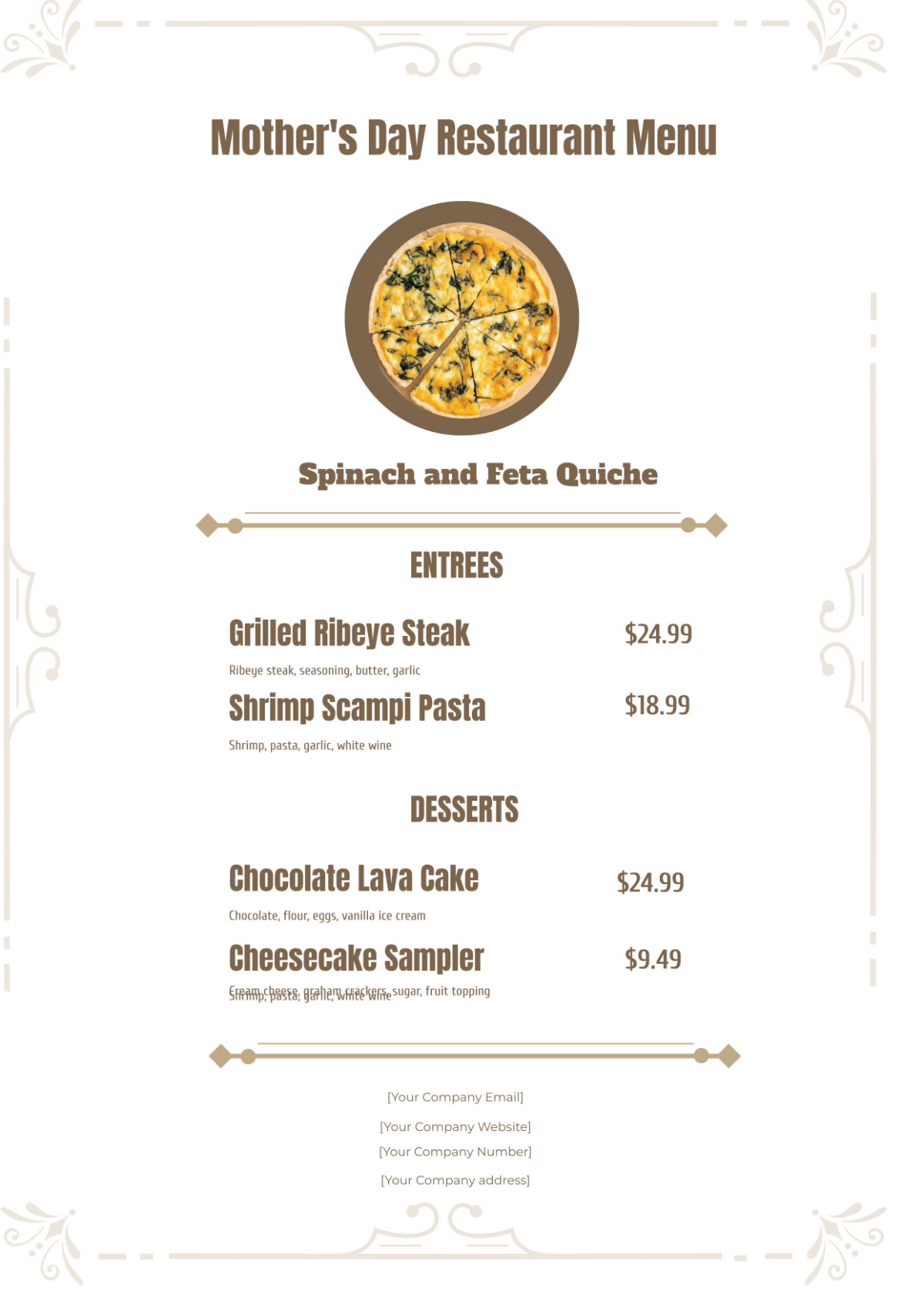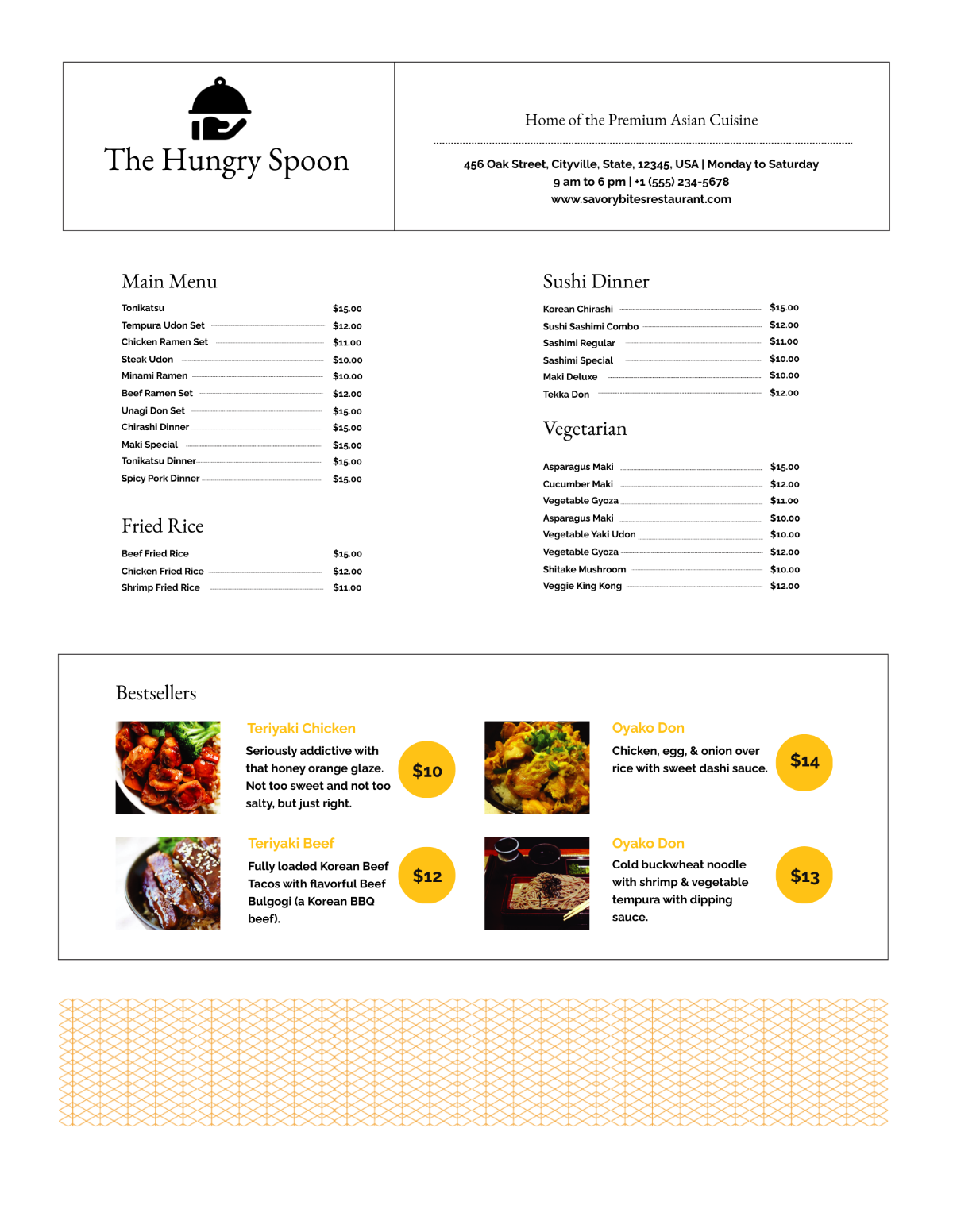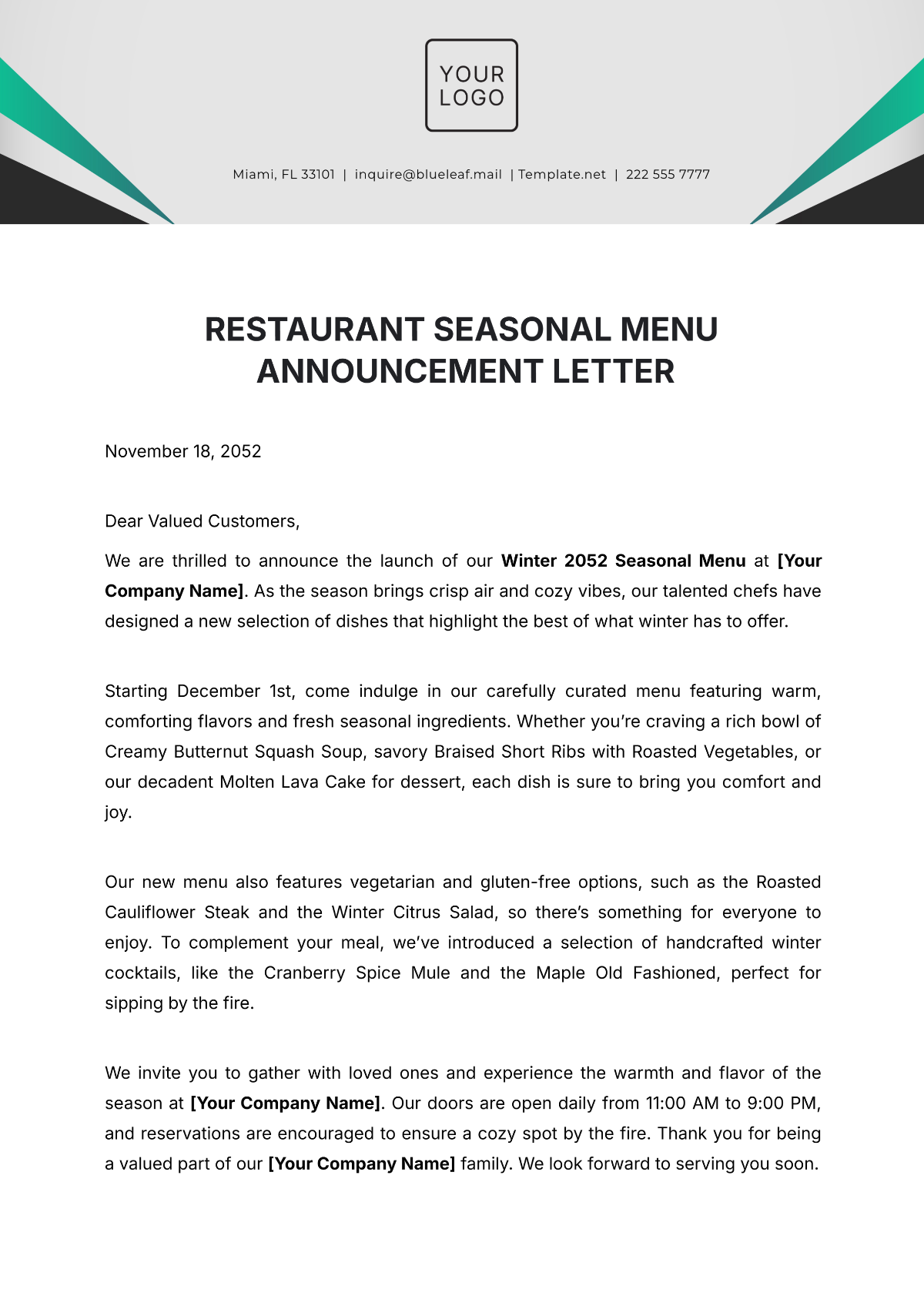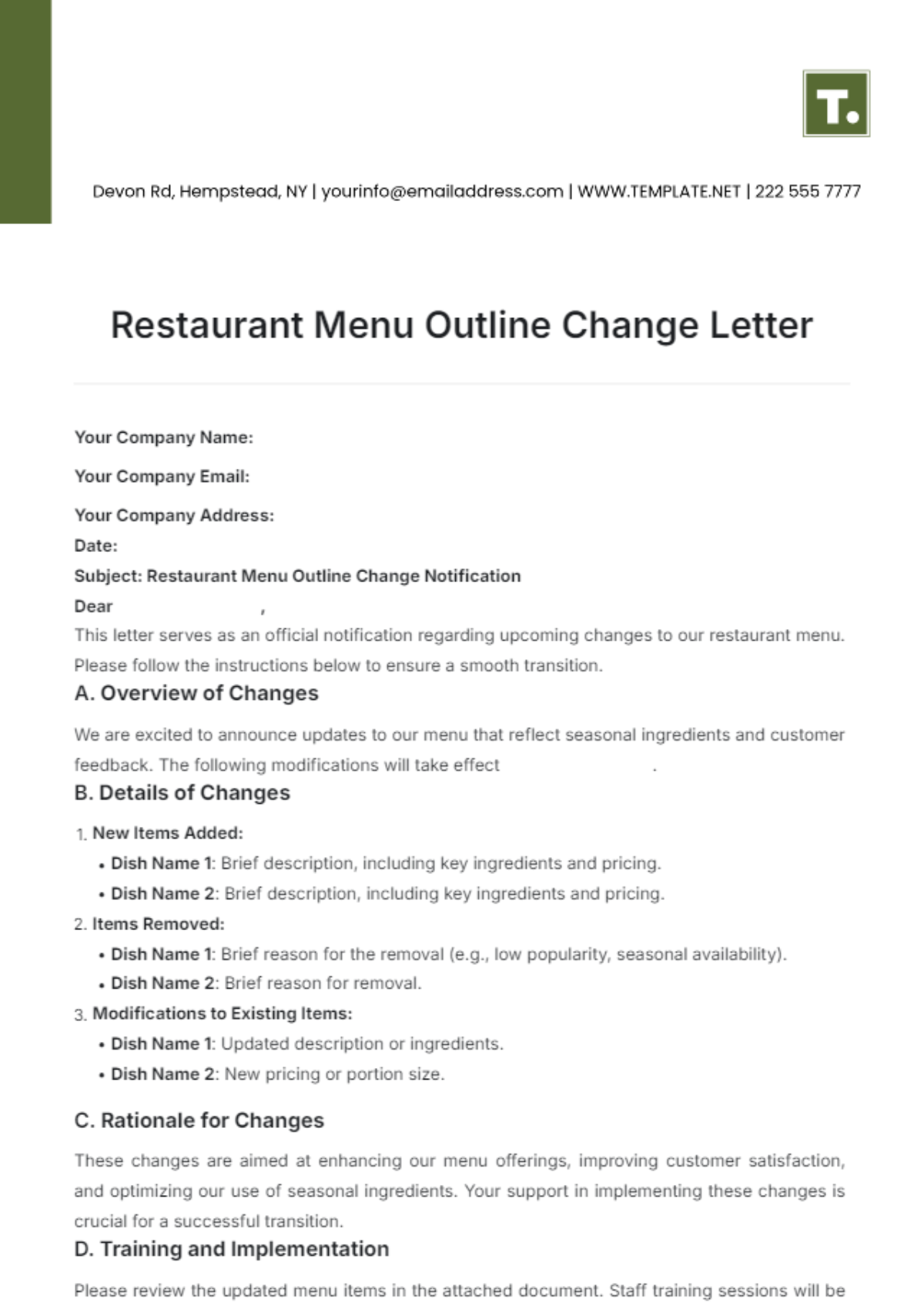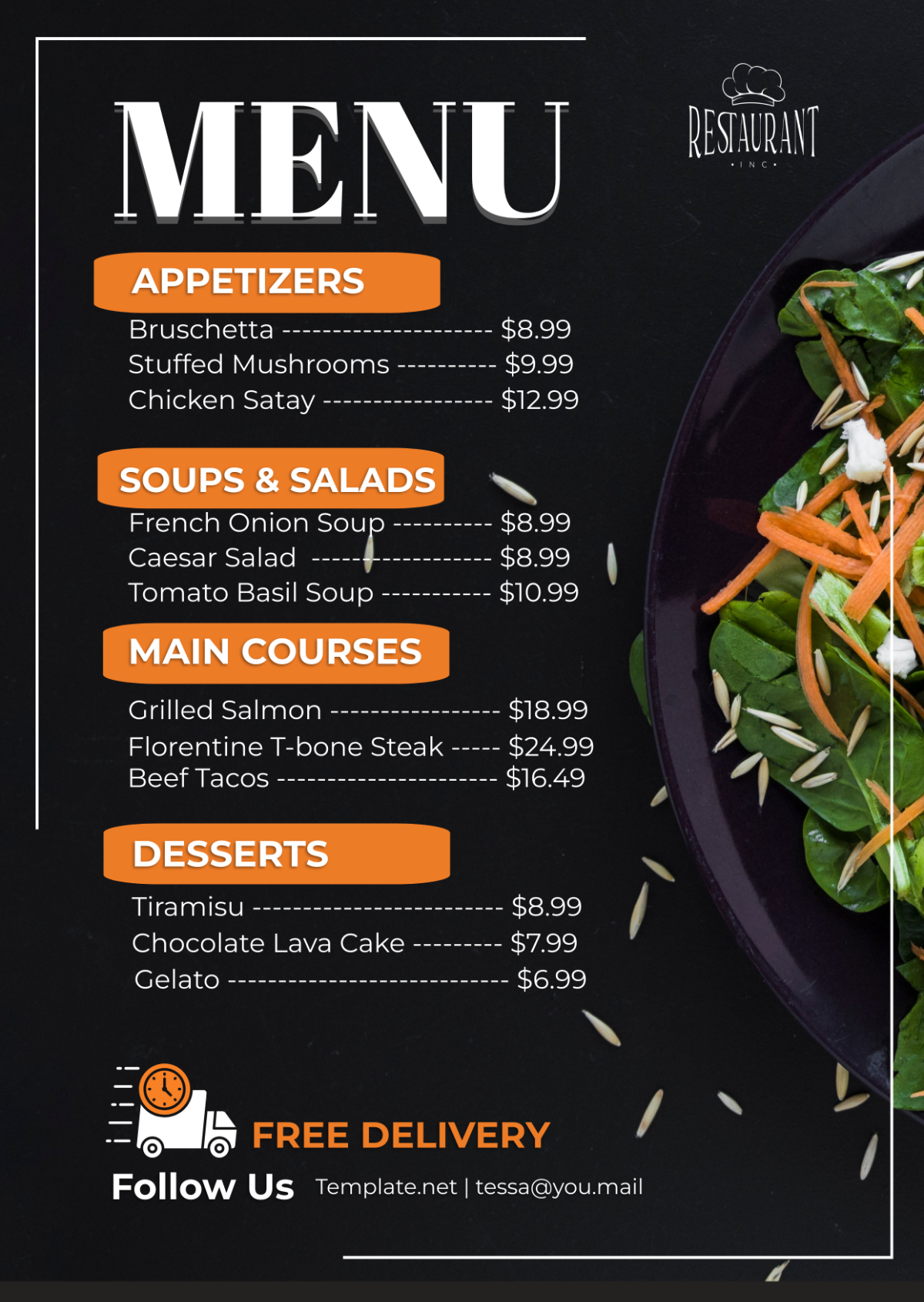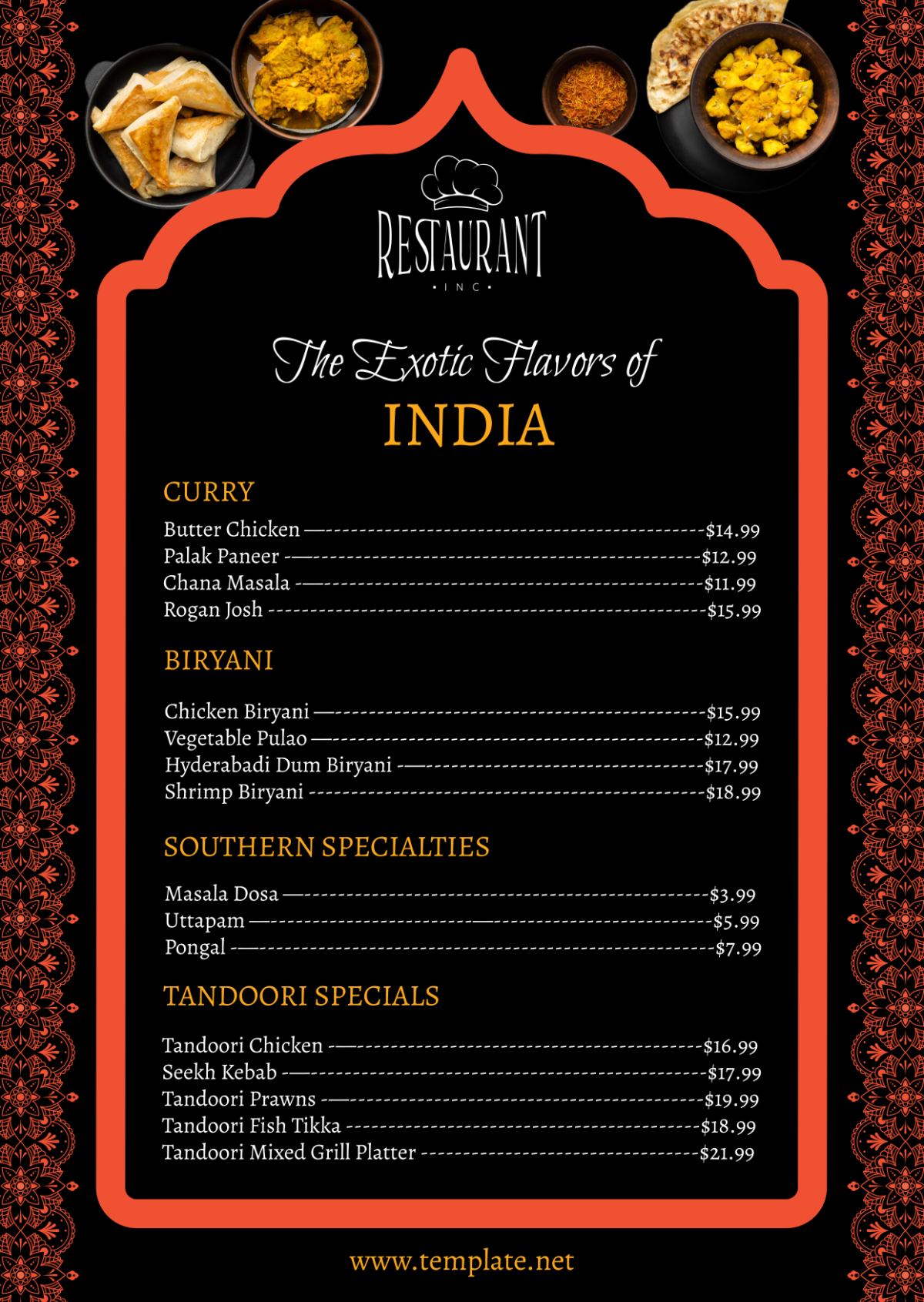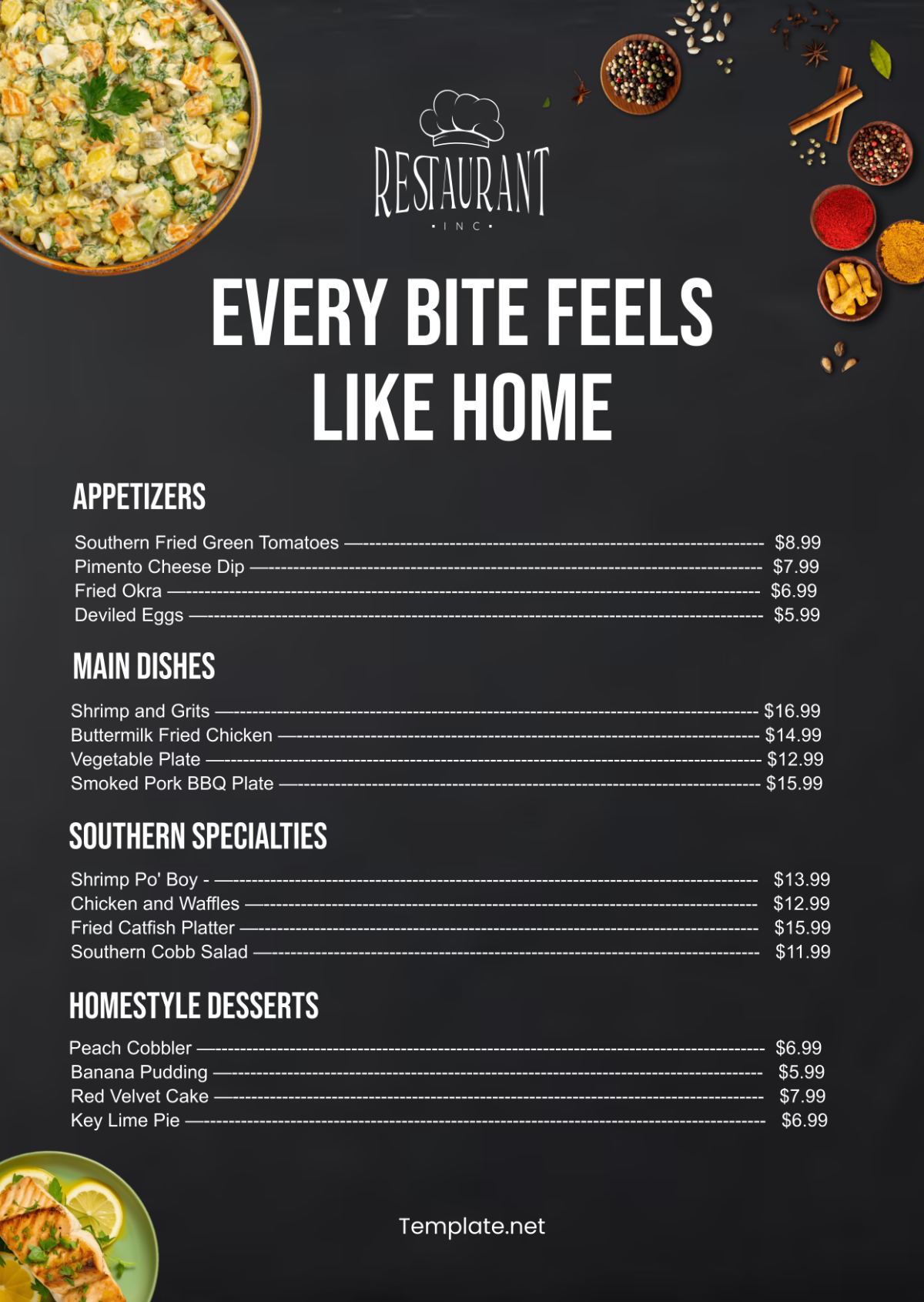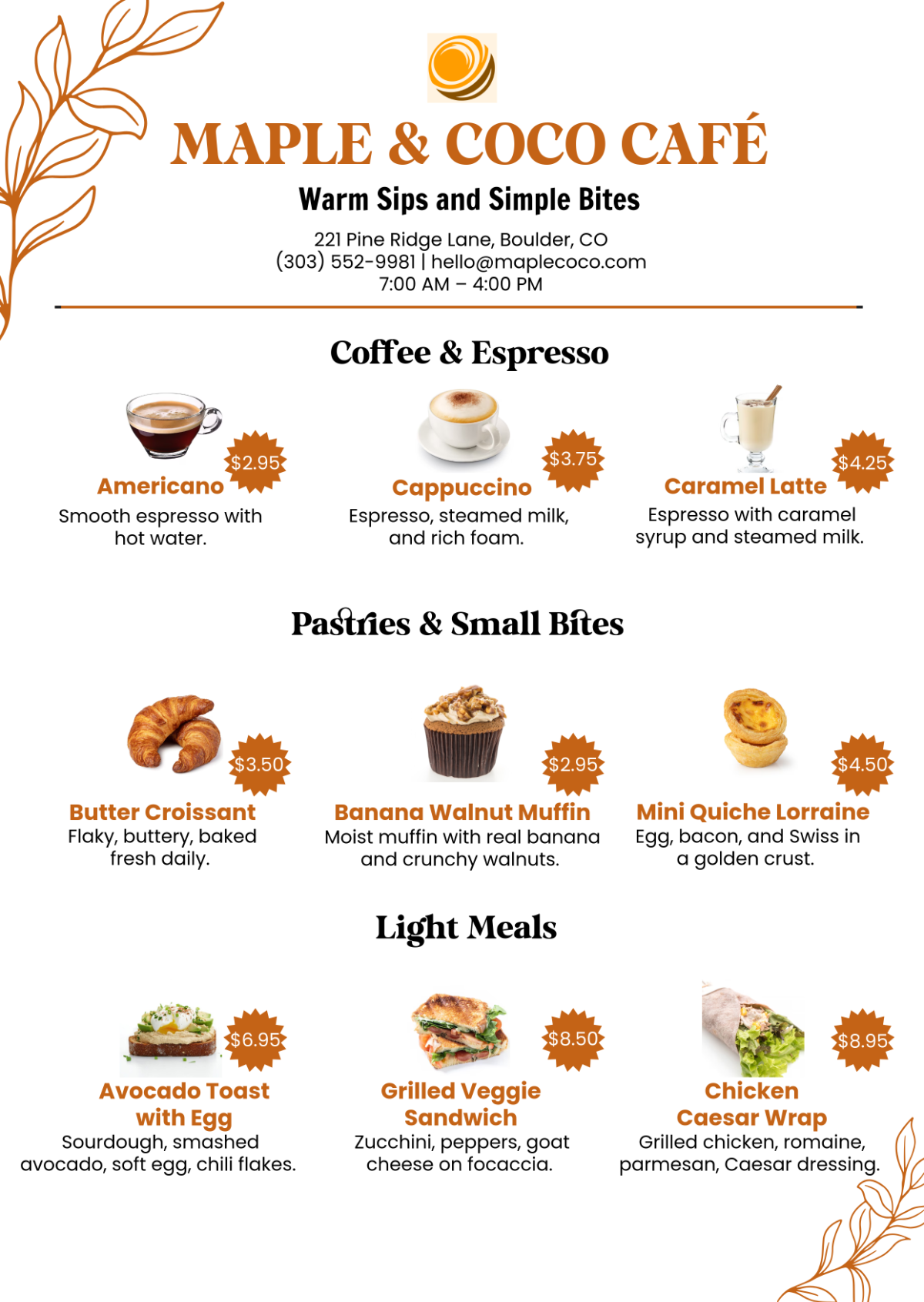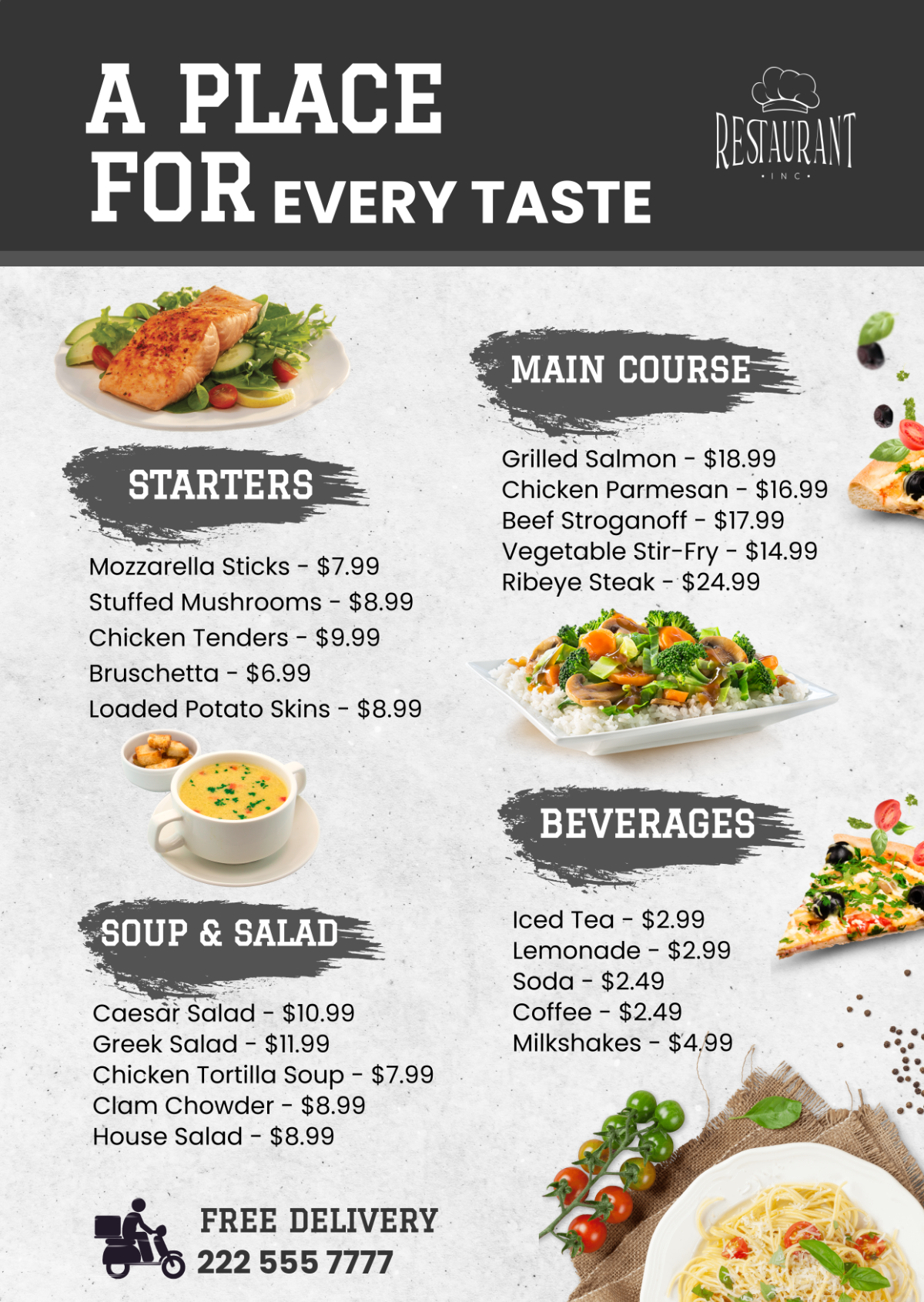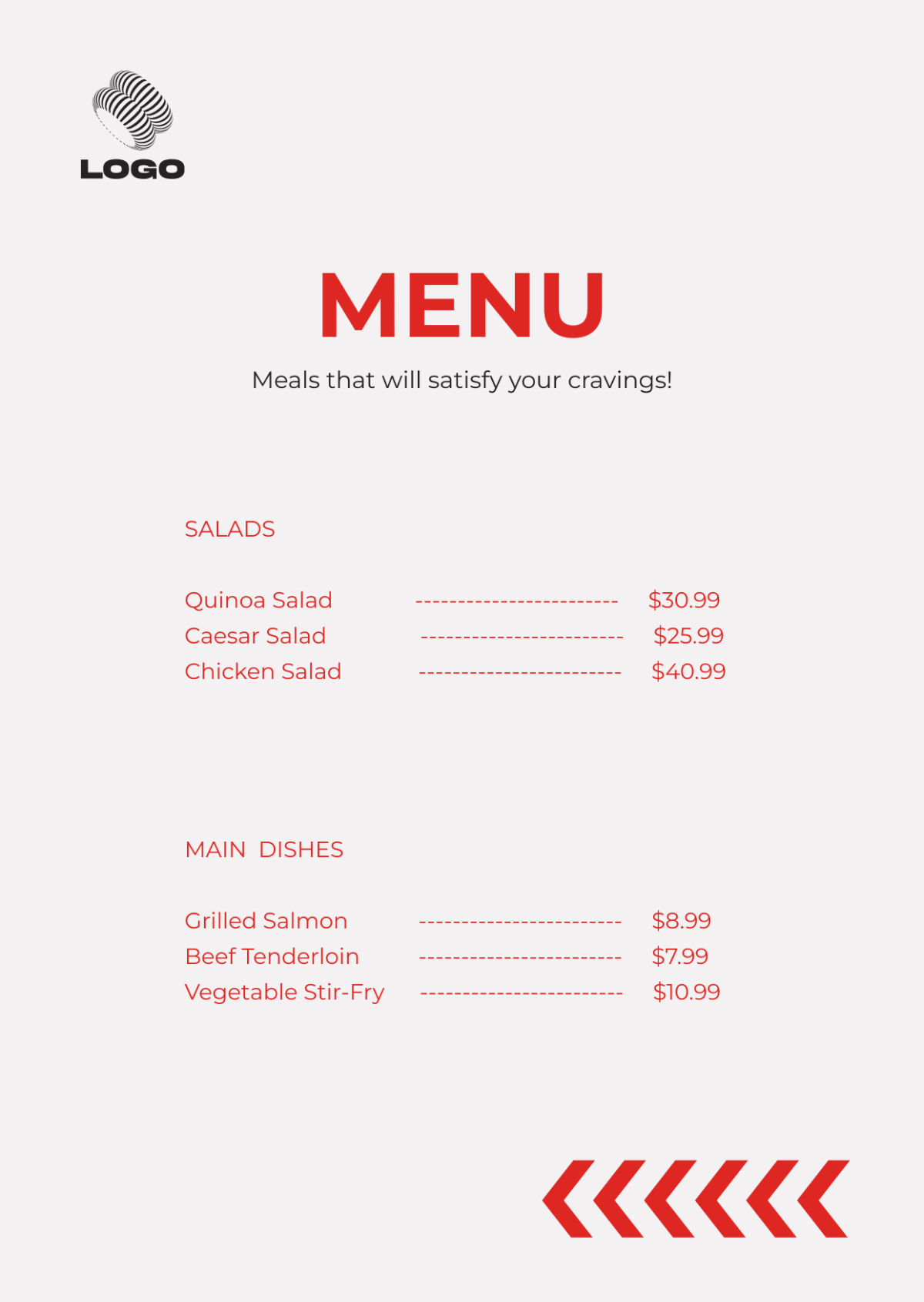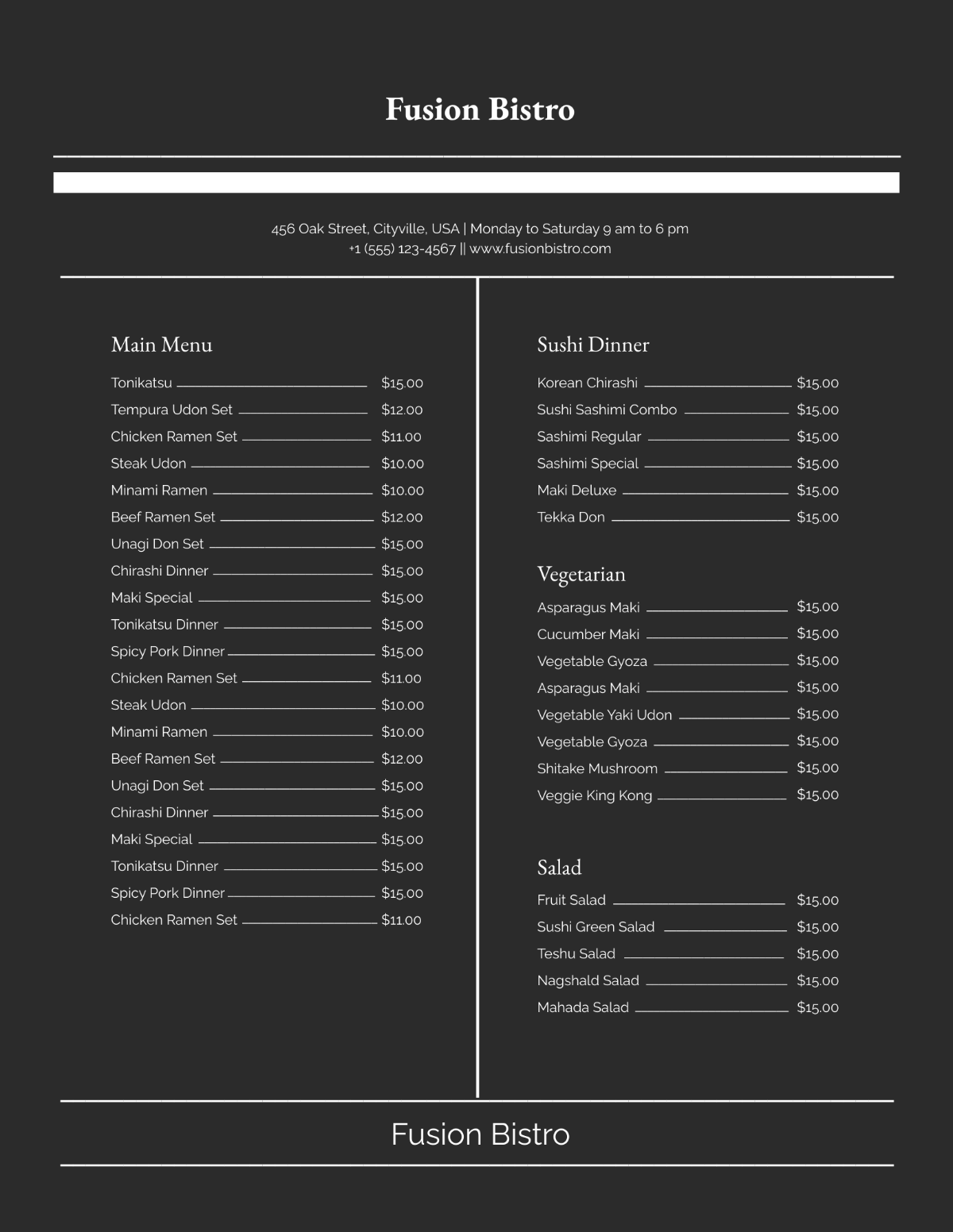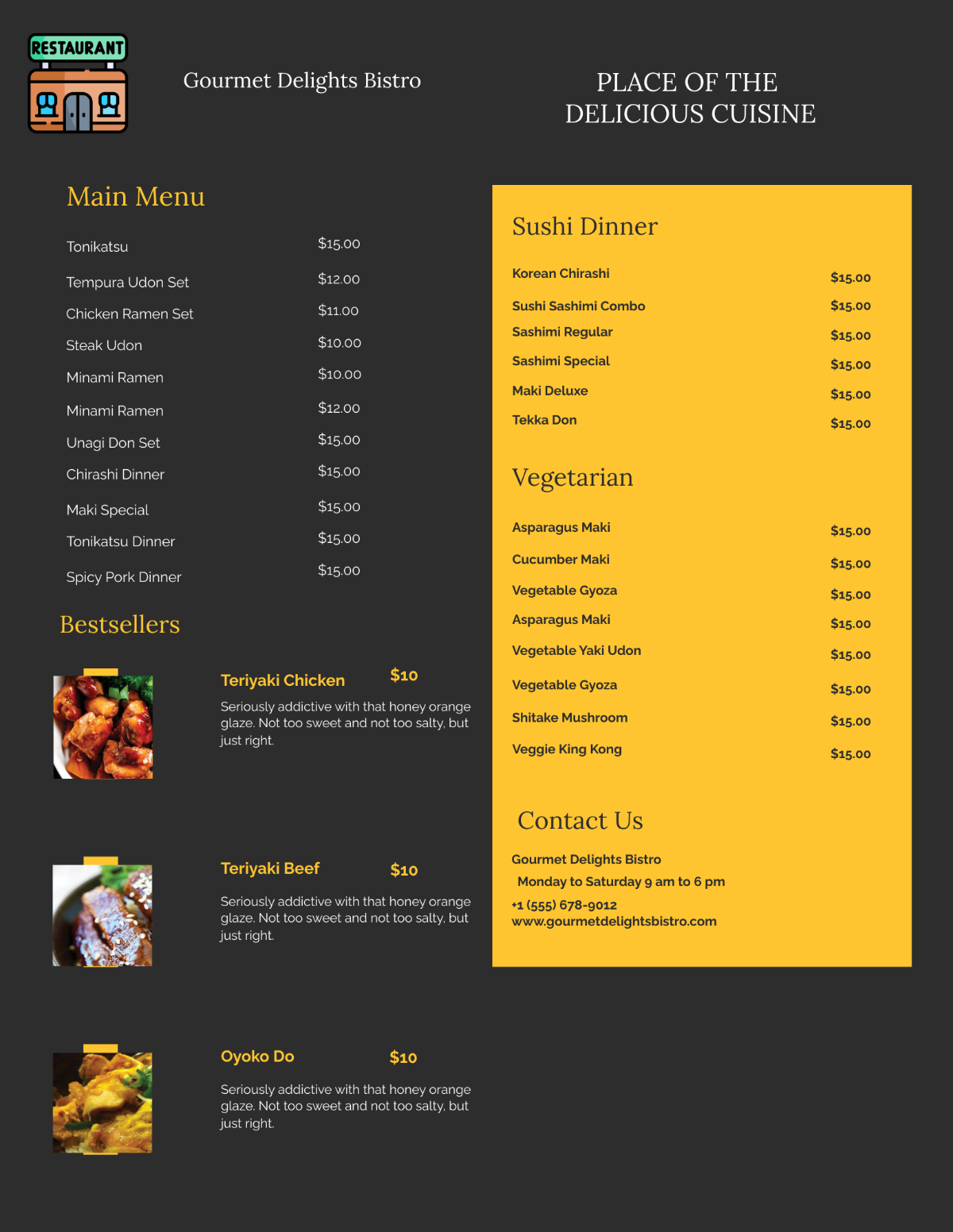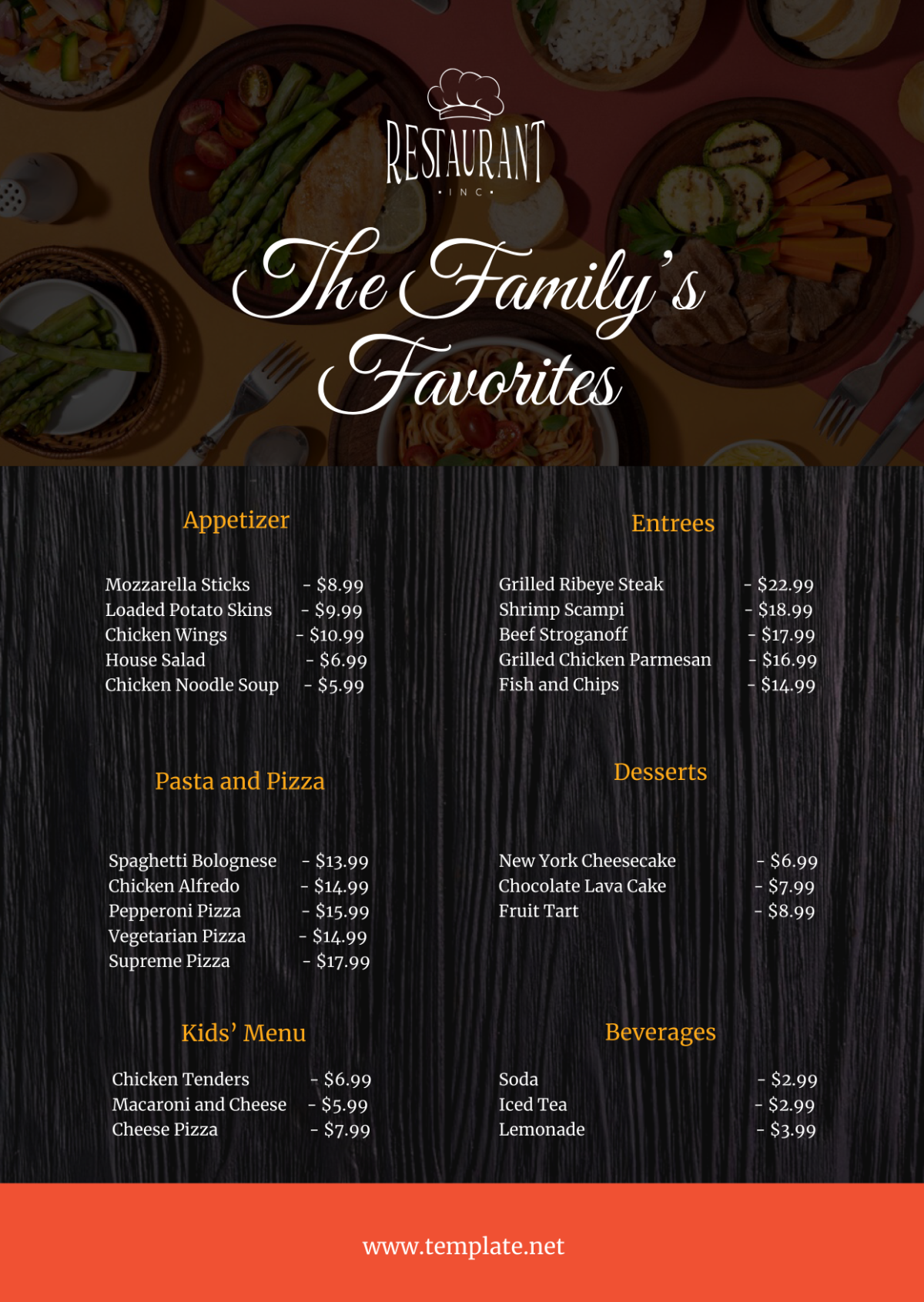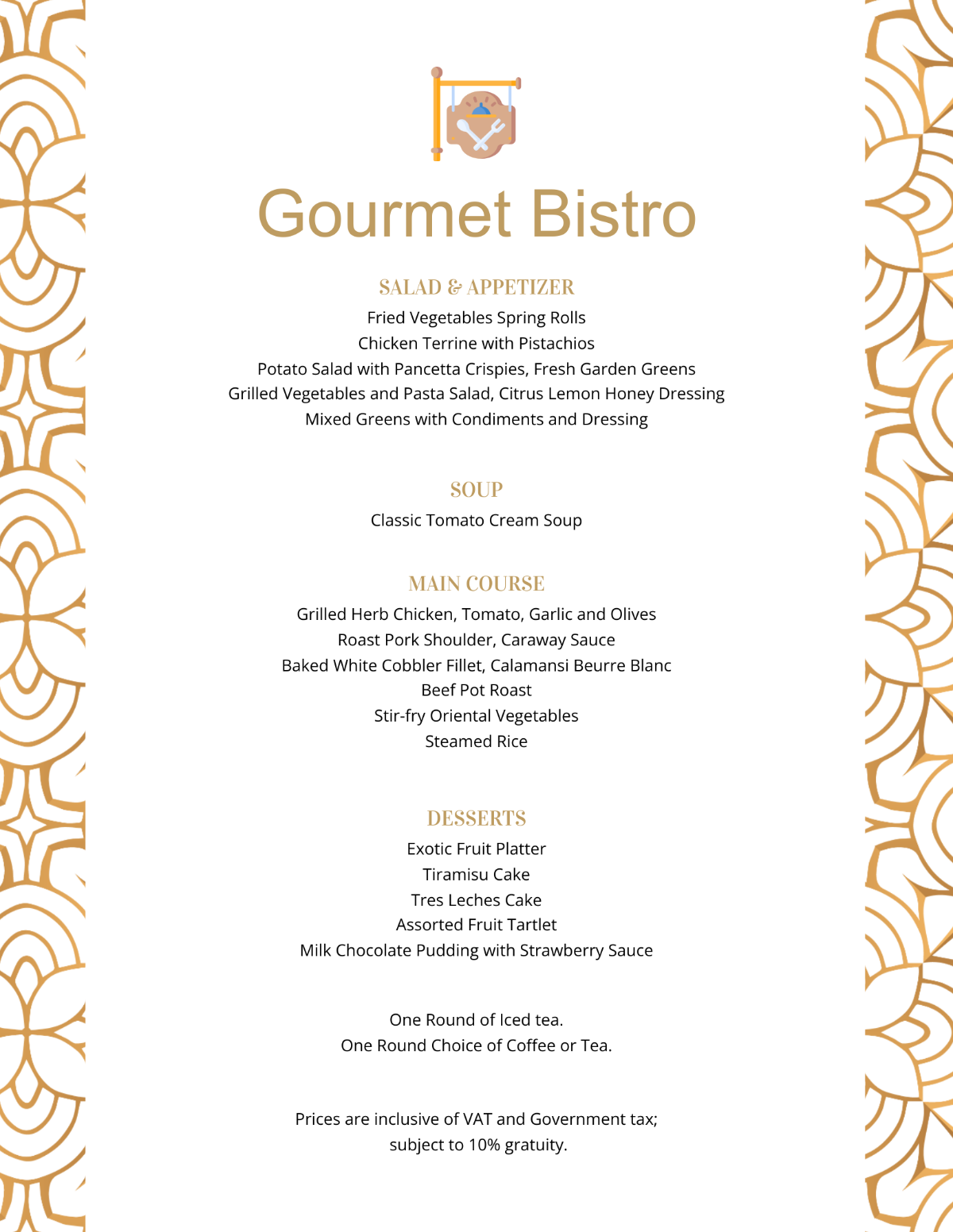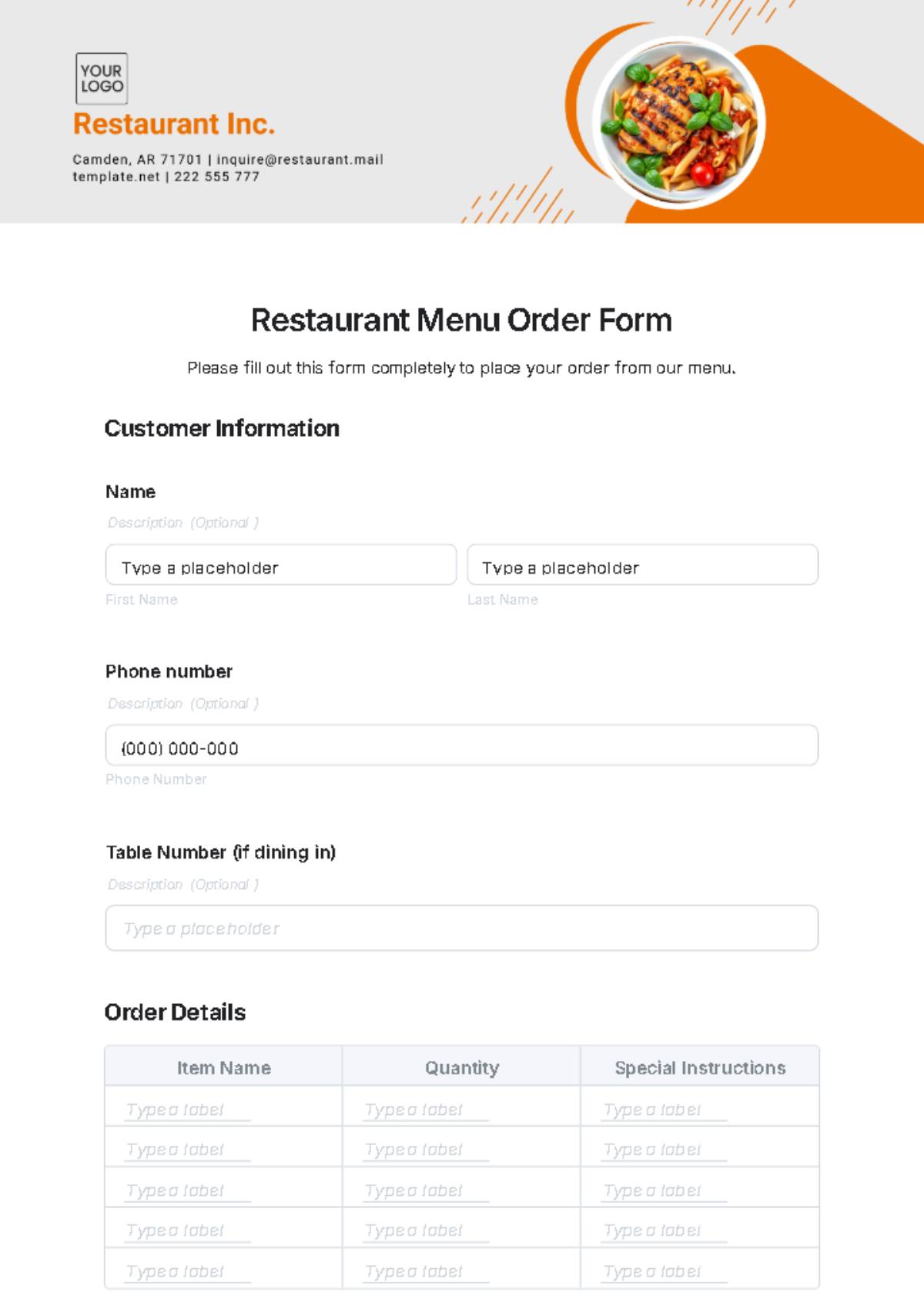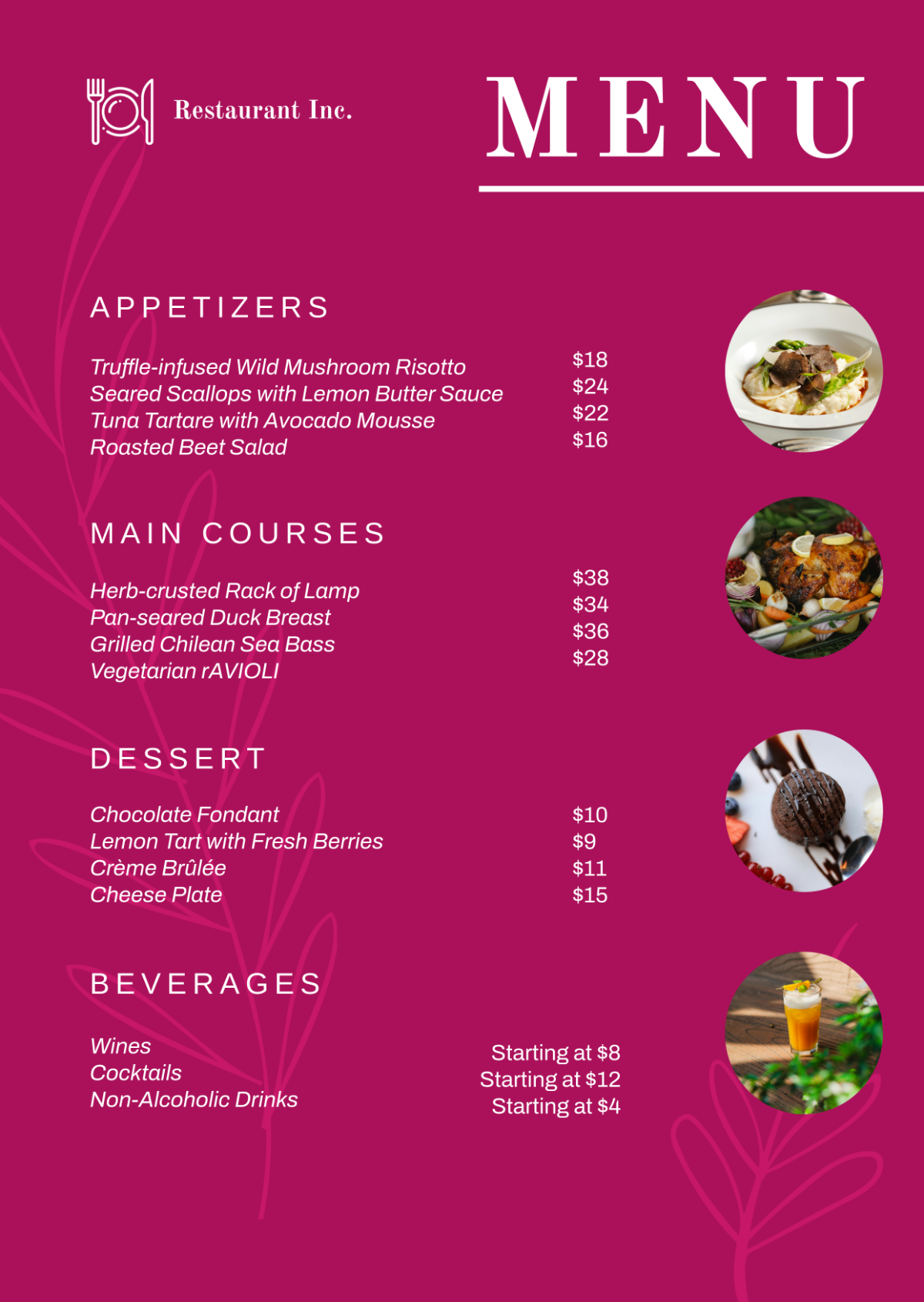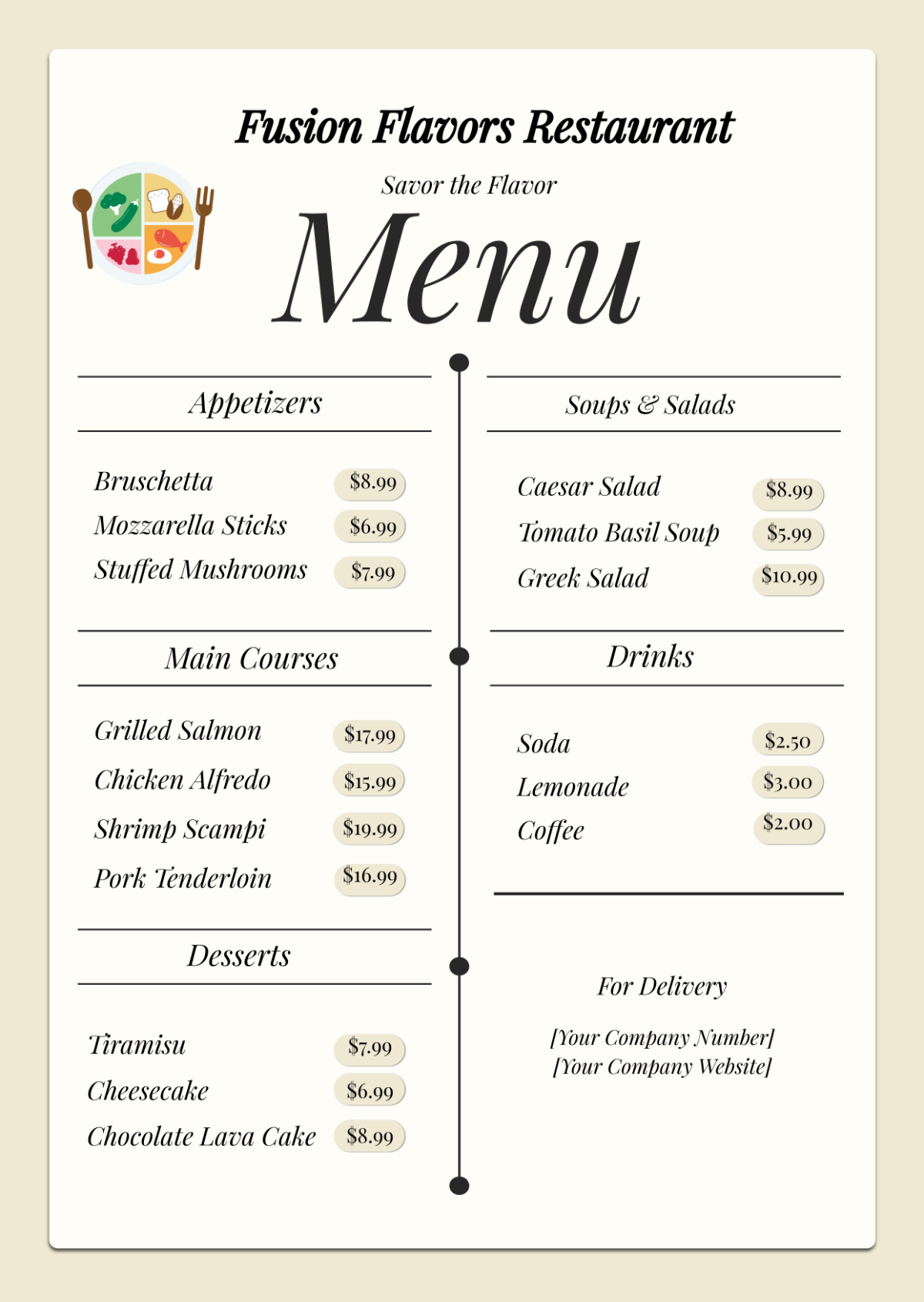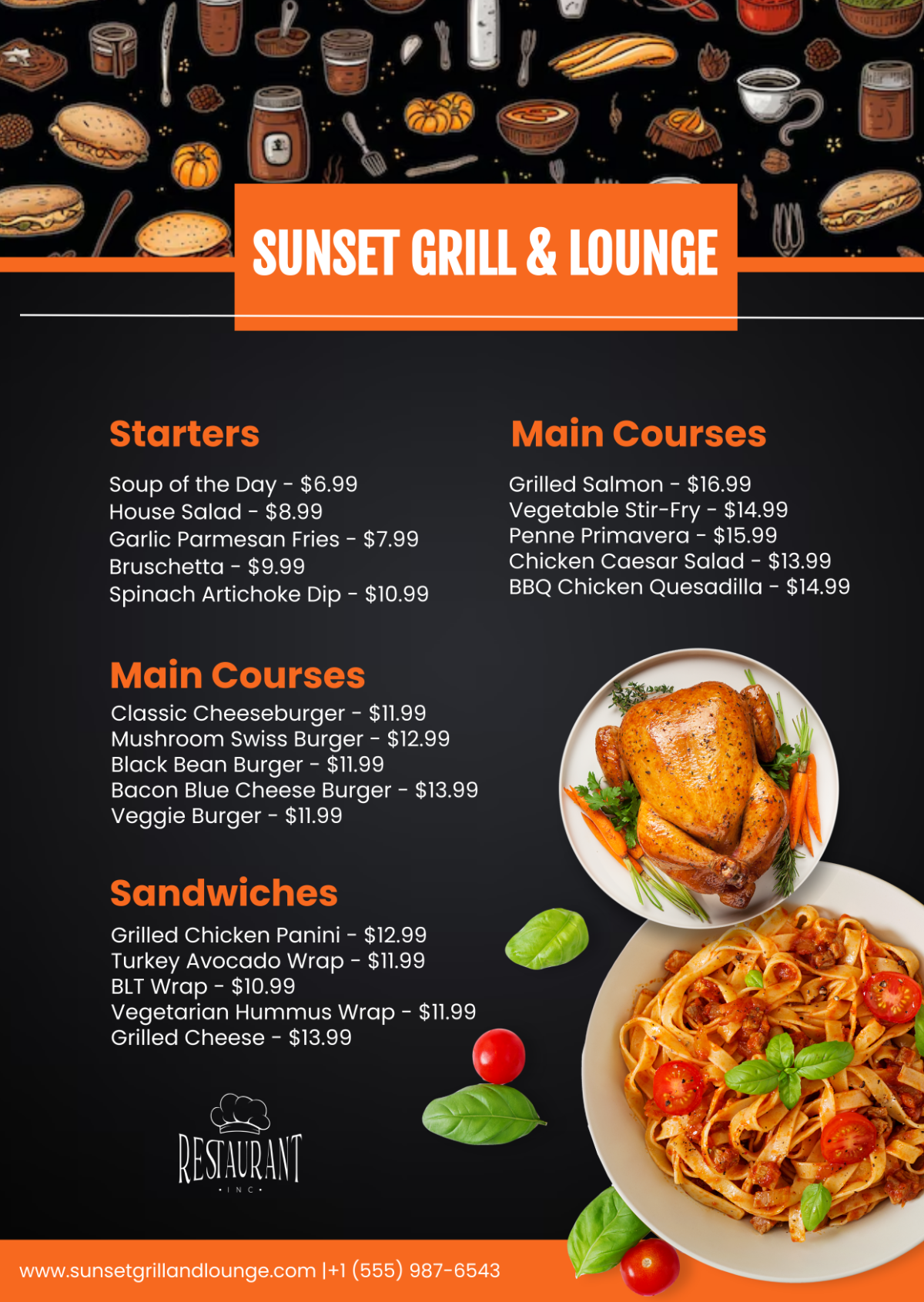Menu Proposal
Client Name: Jane Doe
Event Name: Golden Jubilee Celebration
Date and Time: Saturday, May 12, 2050, 6:00 PM
Venue: Starlight Banquet Hall, New York City
Introduction
Thank you for allowing [Your Company Name] to design the culinary experience for your Golden Jubilee Celebration. We have crafted a menu to honor this momentous occasion, blending timeless classics with modern flavors.
Proposed Menu
Appetizers
Mini Lobster Rolls - Succulent lobster tossed in citrus aioli, served in buttery brioche buns.
Truffle Arancini - Crispy risotto balls infused with truffle oil, parmesan, and fresh herbs.
Vegetable Spring Rolls - Crispy rolls filled with julienned vegetables, served with a tangy tamarind dipping sauce.
Salads
Heirloom Tomato and Burrata Salad - Sweet tomatoes, creamy burrata, and fresh basil, drizzled with aged balsamic reduction.
Quinoa and Kale Salad - Protein-packed quinoa, tender kale, roasted almonds, and dried cranberries with a lemon vinaigrette.
Main Course
Filet Mignon - Tender, perfectly grilled filet mignon with a red wine reduction, served with roasted garlic mashed potatoes and seasonal vegetables.
Herb-Crusted Salmon - Oven-baked salmon with a lemon dill sauce, accompanied by wild rice pilaf and grilled asparagus.
Stuffed Portobello Mushroom (Vegetarian) - Marinated portobello stuffed with quinoa, spinach, and feta, served with a roasted tomato coulis.
Desserts
Molten Chocolate Lava Cake - Warm chocolate cake with a gooey center, served with vanilla bean ice cream.
Mango Panna Cotta - Light and creamy Italian dessert with a tropical mango glaze.
Beverages
Signature cocktails: Golden Glow Martini and Jubilee Spritzer
Fine wines: Sauvignon Blanc, Merlot, and Sparkling Champagne
Non-alcoholic options: Iced Tea, Lemonade, and Sparkling Water
Special Notes
Dietary Restrictions: Gluten-free, vegan, and nut-free options are available upon request.
Customization Options: Ingredients and preparation methods can be adjusted based on preferences.
Pricing
Cost per person: $125
Total estimated cost: $7,500 (for 60 guests)
Pricing includes service staff, tableware, setup, and cleanup.
Additional fees: 10% gratuity and applicable taxes.
Next Steps
To confirm the menu and secure your date:
Approve the proposal by March 30, 2050.
Submit a deposit of $2,000.
Final guest count and dietary requirements due by April 15, 2050.
Contact Information
For questions or adjustments, please contact:
Name: [Your Name]
Email: [Your Email]









